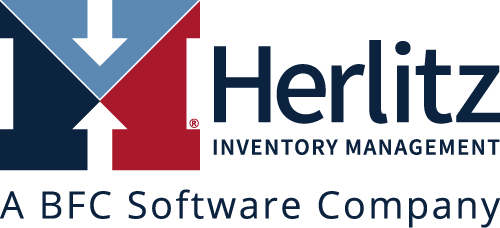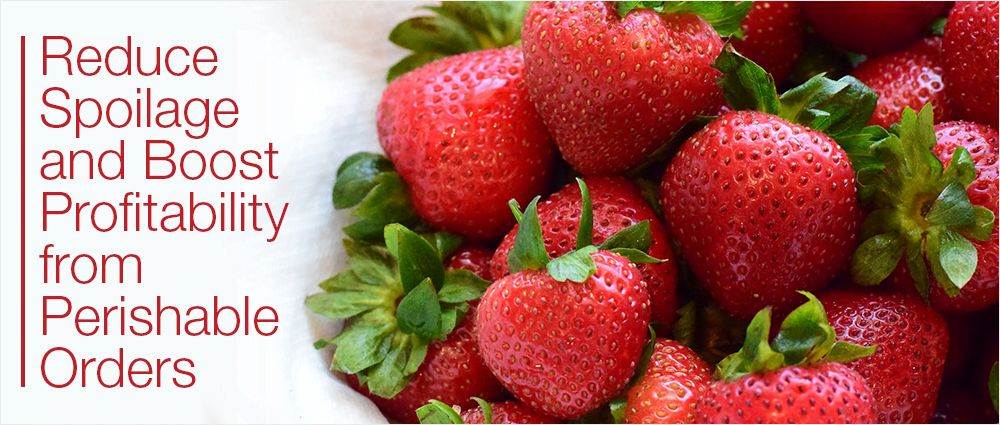There’s a fine line between lost sales and spoilage. Here’s how to find it.
Buying the correct amount of inventory requires a fine balance between ordering enough inventory to support demand without overbuying. Solving this problem is much easier said than done, especially without a strong purchasing system that understands the challenge of stocking perishables. However, the margin for error varies for different products. Perishable buyers specifically have a far less wiggle room than CPG buyers. If too many cases of a product are ordered, spoilage will be higher. If too few cases are ordered, the store will miss out on sales opportunities.
What can be done to not only solve this problem, but make perishables even more profitable with less spoilage?
Accurate Data is Key
In a previous blog post, we mention how there is only one profitable service goal for any given SKU. However, in order to find this goal, you can’t just look at averages. Ordering based on intuition and simple historical data alone will result in missed opportunities and higher losses. Buyers must be armed with accurate data, forecasts, and service levels in order to take the right steps toward improvement.
How you collect and analyze data is crucial to capitalizing on purchasing perishables. If you don’t have a modern purchasing system powered by advanced algorithms, you need to invest in one as soon as possible. The most profitable grocery chains have embraced technological advancements. Your competitors have invested in technology, so you have to do the same in order to compete effectively. If you already have a purchasing system, can you easily evaluate the results? Is it providing the expected ROI? Is the purchasing system costing you thousands of dollars a month with little benefit? If so, maybe it is time to consider an alternative solution.
Improve Forecasting Technique
A perishable buyer’s primary goal should be to consistently buy in quantities that keep the right products in-stock year-round, yet not overstock. Some purchasing systems are great at helping perishable buyers with this, and some are not. If your purchasing system looks at demand by week and not by day and by customer, it isn’t showing you a complete picture and you are missing key data as a result.
Seasonal profiles can describe seasonal patterns during the year and during the week. Perishable items are purchased multiple times a week. Is today’s order to cover 2-3 low demand days or high demand days. Seasonal profiles can show buyers what sales, order quantities, and more to expect for any given day of the week leading up to the holiday. A system without seasonal profiles makes it hard to know exactly when demand will increase. If you are buying perishables without this level of information, your order quantities will likely end up being guesses with less than optimal results.
For items that have a particularly short shelf-life, it is sometimes necessary to order just enough cases to cover 1-2 days at a time. Your buyers can do this manually and some may be doing it well. But the time invested to get there is huge compared to letting the system do it while they sleep. Again, without the right analytical tools in place, this becomes a daily, “educated” guessing game. The best purchasing systems enable buyers to see how much to buy to cover a few days at a time in the future by looking at how one day’s demand compares to other days of the week on average.
Reduce Spoilage
With accurate data and stronger forecasting techniques, buyers will be able to reduce spoilage and boost profitability from perishable orders. However, without the right purchasing system, it requires hours of manual calculations on a daily basis to see improvement, but the results will still not be as strong as they could be. As an example, one of our customers’ dairy buyers was convinced that Milk couldn’t be bought with a system. Another buyer challenged him and bought Milk in our system and reduced spoilage by 40%.
HIMPACT helps perishable buyers on a daily basis save time, energy, and resources while improving service levels, sales, and profitability. Don’t just take our word for it. One of our Meat buyers put HIMPACT to the test to see just how well it bought. For six months straight, this buyer hasn’t changed any suggested order quantities that HIMPACT generated. As a result, they buyer has maintained his 98.5% service goal and reduced inventory by 10%.
Let us show you how well HIMPACT performs and how much it can help improve your supply chain. Contact us today to see HIMPACT in action in your organization.

